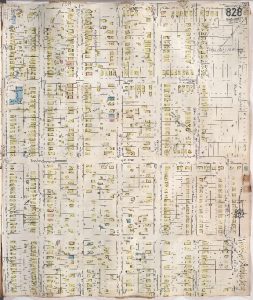Within my boundary of Indiana to Askew, not much had changed population wise from 1950 to 2010, however, there was a major racial shift from 1950 to 2000. The tract population was 100% white people in 1950, particularly the white middle aged people who were well off in their jobs and set in their lives. This all changed and on the 2000 census, tract 57 was recorded as having almost 96% of it’s residents identifying as African American, who turned out to be making more income and raising the value of the houses. A concept that was “unbelievable” at that time in history. I believe this was due to the lifting of the racially restrictive covenants as well as the redlining that was around before the Civil Rights movement. Even in present day Indiana and Askew, the population is predominantly African American and slightly more Hispanic and Latino than it was in 2000 as well.
Back in 1950, pretty much every house had a family or somebody living in them. Unfortunately as time has passed, this has not remained the case. There were 312 vacant housing units in this census tract in 2010, but there were 30,000 vacant housing units in the metropolitan area of Kansas City. This was a huge shock and a disappointment as most of us drive by at least one homeless person a day. The fact that we have this many unused houses is astounding and heartbreaking when they could be put to good use instead of just rotting away.
